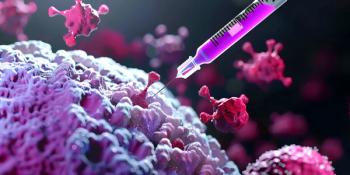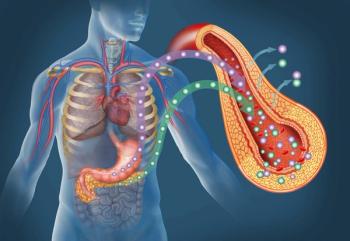
Protein Identified in Cancer Cell That Keeps Kaposi's Sarcoma Herpesvirus Dormant
The new study analyzed KSHV’s latent-lytic switch, a process in which the virus exits its dormancy state to replicate in the host cell.
A protein in the nucleus of cancer cells keeps Kaposi’s sarcoma-associated herpesvirus (KSHV) dormant and undetected by the body’s immune system, according to reserarchers at UC Davis Health. The virus has been linked to AIDS-related Castleman’s disease and multiple cancers.
The new study analyzed KSHV’s latent-lytic switch, a process in which the virus exits its dormancy state to replicate in the host cell. In the replication phase, or the lytic cycle, it ends with the dissolution of the cell and the release of the viruses, which infects bordering cells.
“The virus likes to stay silent as long as possible to avoid being detected by the body’s immune system,” said study senior author Yoshihiro Izumiya, professor at the Department of Dermatology and director of the Viral and Pathogens Associated Malignancies Program at UC Davis Comprehensive Cancer Center, in a press release.
The researchers intended to uncover the mechanisms behind the latent-lytic switch and the role the host cell environment played in the process.
“Where the virus latches onto the host cell, how it manages to stay dormant, and what triggers its activation were very exciting and important puzzles to solve,” Izumiya said in the press release.
The research team used Capture Hi-C and DNA Fish methods to analyze chromosomal interactions on 3 cancer cell lines naturally infected with KSHV. The virus’s preferred docking sites were located inside the host chromosomes and the binding patterns showed a nuclear ecosystem that can attract and help keep the virus in its silent form, according to the study authors.
Further, chromodomain helicase DNA binding protein 4 (CHD4) binds to the virus’s genomic elements, as this is a type of protein in the host cell’s chromosomes that suppresses the work of the gene responsible for viral replication.
“The location where the virus genome attaches to the host chromosome is not random,” said the paper’s first author Ashish Kumar, a postdoctoral researcher in Izumiya Lab, in the press release. “Without having enriched CHD4 protein, the virus starts to replicate, kicking in a cell destructive mode. For the virus to select CHD4 among many other host proteins, CHD4 must play a unique and important role in host cells.”
The team is hopeful that their work will further improve cancer therapy development by utilizing virus-host interaction.
REFERENCE
Discovery of cell protein that keeps Karposi’s sarcoma herpesvirus dormant. UC Davis Health. May 11, 2022. Accessed May 17, 2022.
Newsletter
Stay informed on drug updates, treatment guidelines, and pharmacy practice trends—subscribe to Pharmacy Times for weekly clinical insights.














































































































































































































